Bulbs are among the most anticipated flowers — their appearance signals a new garden season and the return of color to the bleak late-winter landscape. But this fall, before you arbitrarily plant a smattering of tulips here and a bag of daffodils there, consider what effect you want and how you can disguise the bulbs' dying foliage that is necessary for the following year's blooms.
These 10 design ideas will help you achieve the greatest impact from the spring and summer bulbs you plant in fall.
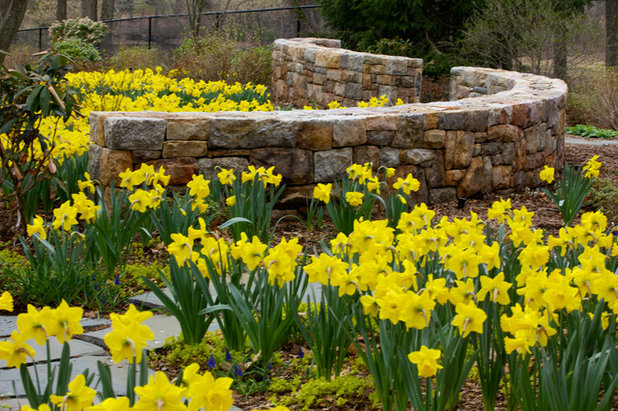
The Todd Group
1. Let them multiply freely. Few springtime sights are as spectacular as masses of naturalized bulbs — informal sweeps that look like Mother Nature did the planting herself.
When choosing bulbs for a naturalized planting, look for species and varieties that will multiply readily without becoming invasive. Also look for a location where you can live with the relaxed look of dying bulb foliage once the flowers are gone.
Excellent choices include small bulbs like crocus, snowdrops and scilla for lawns; grape hyacinth, species tulips and 'tete-a-tete' dwarf daffodils for rock gardens; and larger daffodils and checkered lily
(fritillaria meleagris) for fields and woodland settings.
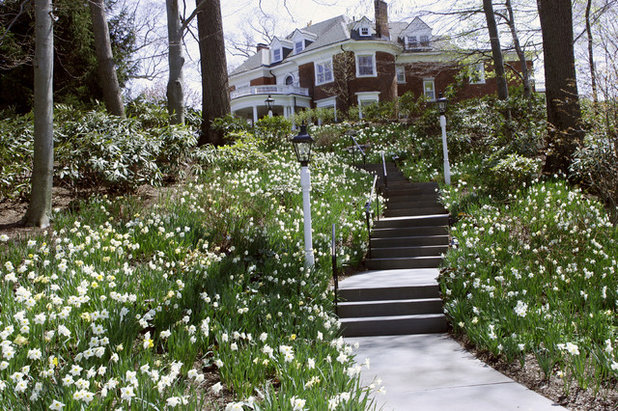
The Todd Group
One of the most striking areas to plant bulbs to multiply freely in is beneath deciduous trees and along woodland paths. The bulbs will get ample sunshine before the trees leaf out.
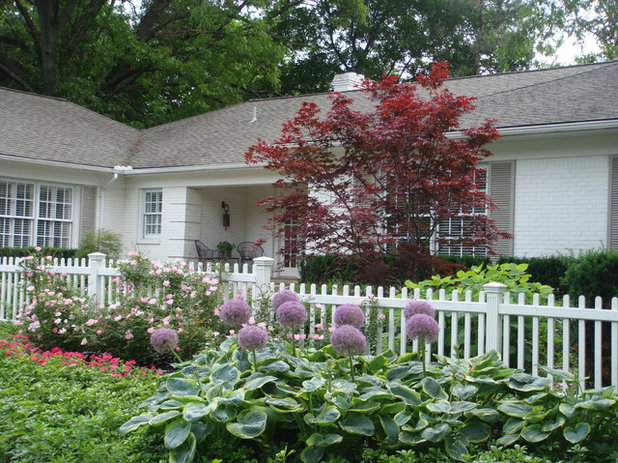
Great Oaks Landscape Associates Inc.
2. Mix with companion plants. The trickiest part of gardening with bulbs involves getting through the inevitable ugly stage — the time required after flowering for foliage to die back and store energy for next year's blooms. At this point, you'll want nearby plantings that can disguise the yellowing leaves and take over.
Don't worry about the minor foliage of smaller bulbs like species tulips, muscari and crocus. Team midsize bulbs with perennials like rockcress, lady's mantle, Oriental poppy, catmint, chrysanthemum, shasta daisy and candytuft. Tall later-blooming bulbs need larger companions, such as hostas, small shrubs and shorter ornamental grasses.
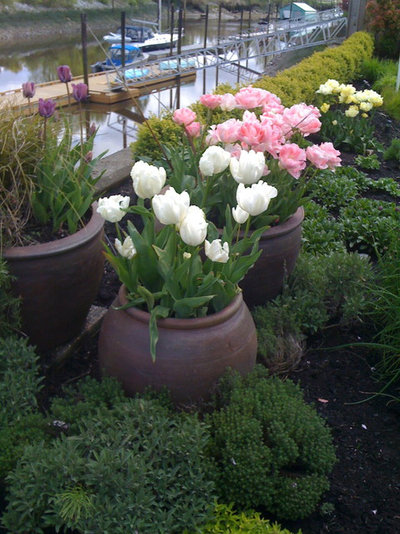
Glenna Partridge Garden Design
3. Fill containers with color. Surprisingly, perhaps, bulbs perform as well in containers as they do in the ground. Plant portable pots in autumn, then overwinter the plants in a cold garage or storage shed before placing the containers out in spring. You'll have the advantage of being able to put color right where you want it.
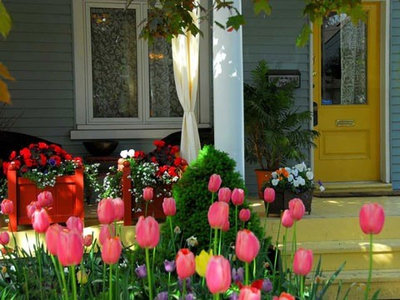
Denise Dering Design
4. Play with color schemes. As a general rule, plant bulbs in sizable groupings for the most impact. (Aim for at least 12 larger bulbs and 50 or more if they're small.)
Though it's advisable to keep bulbs of the same variety together, you can occasionally include a random extra to create the happy accidental look of a cottage garden.
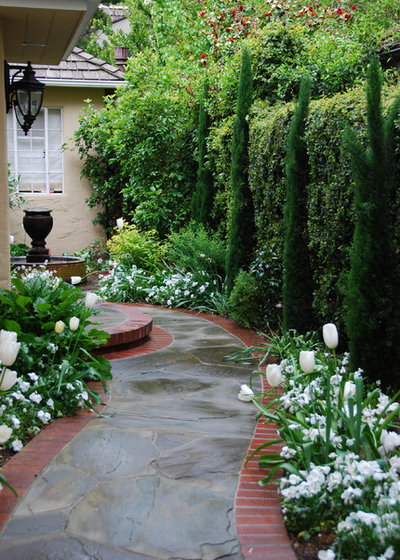
Verdance Landscape Design
In monochromatic schemes, the bulbs' main role is to provide design interest rather than color. As a result, you can use fewer bulbs to accomplish the goal. In this photo, small staggered groupings of tulips provide rhythm and repetition, leading the eye down the path to the front door.
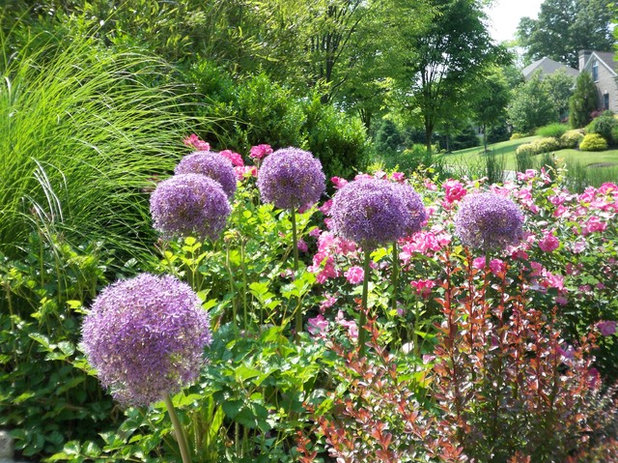
Little Miracles Designs
5. Reinforce your garden's style. The same bulb can appear formal or informal depending on how you use it. For casual landscapes, group bulbs in an irregular manner to mimic how they would grow in nature.
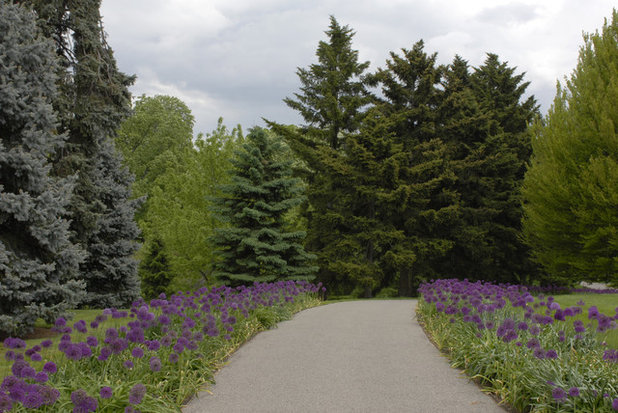
The New York Botanical Garden
For a more formal look, plant that same bulb in rows alongside a path or a driveway. This more manicured look works best with larger-flowering bulbs like Darwin hybrid tulips or tall alliums.
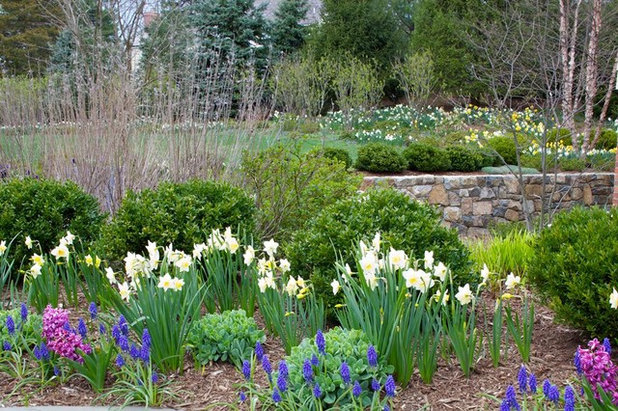
The Todd Group
6. Use shrubs as perfect backdrops. Spring-blooming bulbs pop when planted in front of evergreen shrubs in a border or a foundation planting. Even white looks dazzling in comparison to the shrubs' dark green.
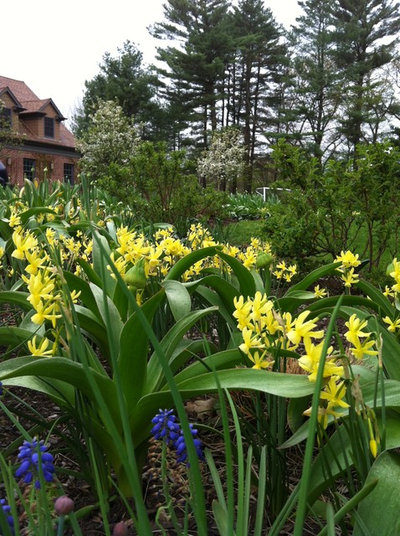
Natalie DeNormandie
7. Plant for a layered effect. Create greater impact by using the same space to plant small, medium and large bulbs on top of one another.
For instance, in the same 8-inch deep hole, you can first plant alliums or large tulips and cover them with a few inches of soil. Add hyacinths or miniature daffodils that you also cover, then end with small bulbs like crocuses, species tulips, and grape hyacinths.
In this photo, alliums are getting ready to bloom, while daffodils and hyacinths are going strong.
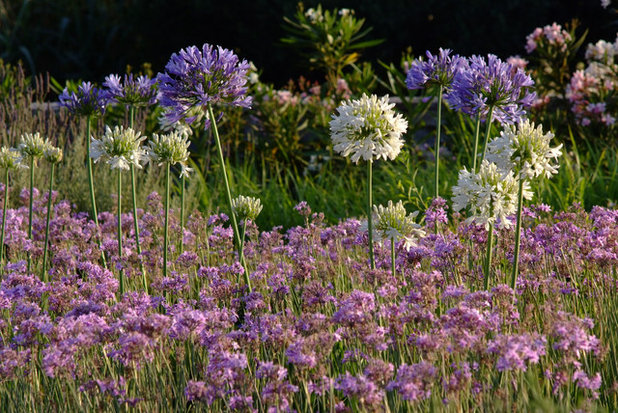
Carolyn Chadwick
Layering can take on an abundant, natural look that is perfect for casual gardens and meadows. Here, agapanthus and society garlic put on a multilayered show.
See more of this landscape design in Greece
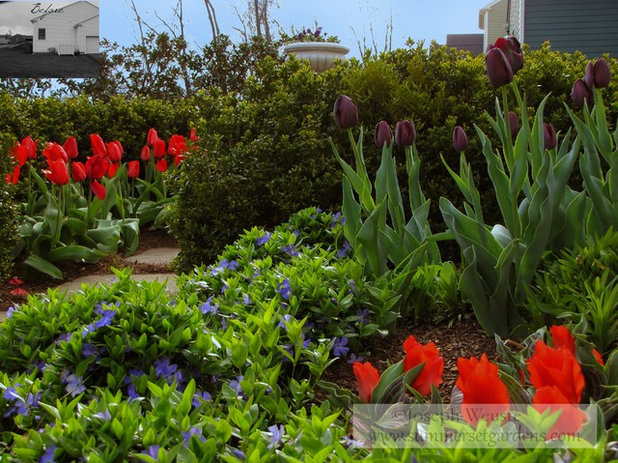
Summerset Gardens/Joe Weuste
8. Create a view. If you're like most gardeners, you long to look outside your window and glimpse that first colorful bloom. Consider planting with that in mind. Mark spots in your yard that are easily viewed from the windows you most frequently look through.
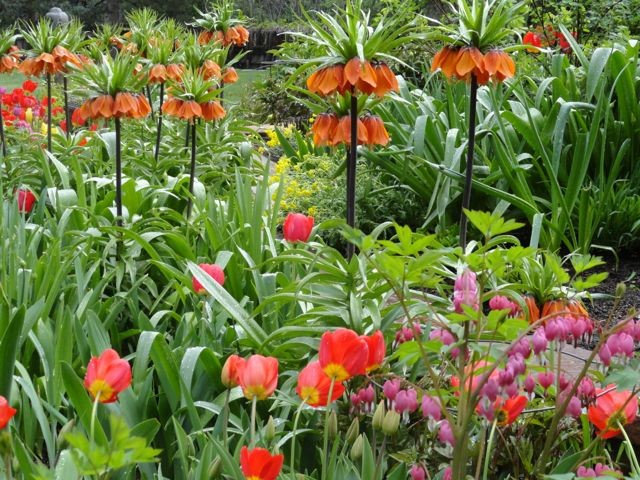
B. Gardening Landscape Design
9. Keep color coming. Use a mix of bulbs that bloom early, midseason and late in the season to provide successive color in your garden. Plant them near perennials that will peak a little later, cover the remnants of the dying bulbs and keep the color alive.
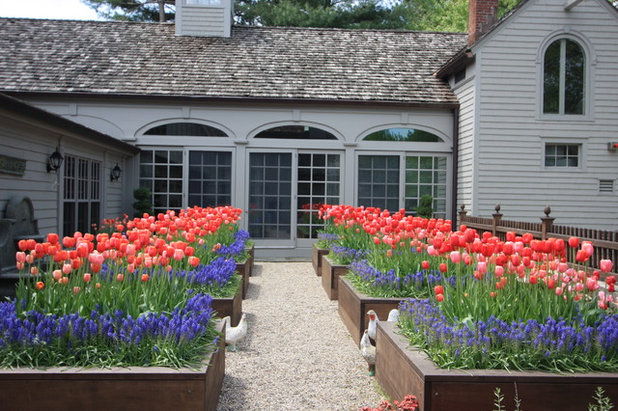
Conte & Conte, LLC
10. Edge the garden. Use smaller bulbs like grape hyacinth or scilla as a colorful border to frame a more formal bulb garden or the early-season greens in a vegetable plot. Here, raised beds of pink and coral tulips are accentuated by grape hyacinth. Though a planting like this is stunning, you'll need to remove the bulbs after they bloom or add enough perennials or annuals to provide interest until the foliage naturally dies.
More: 6 Unsung Bulbs for Fall Planting





